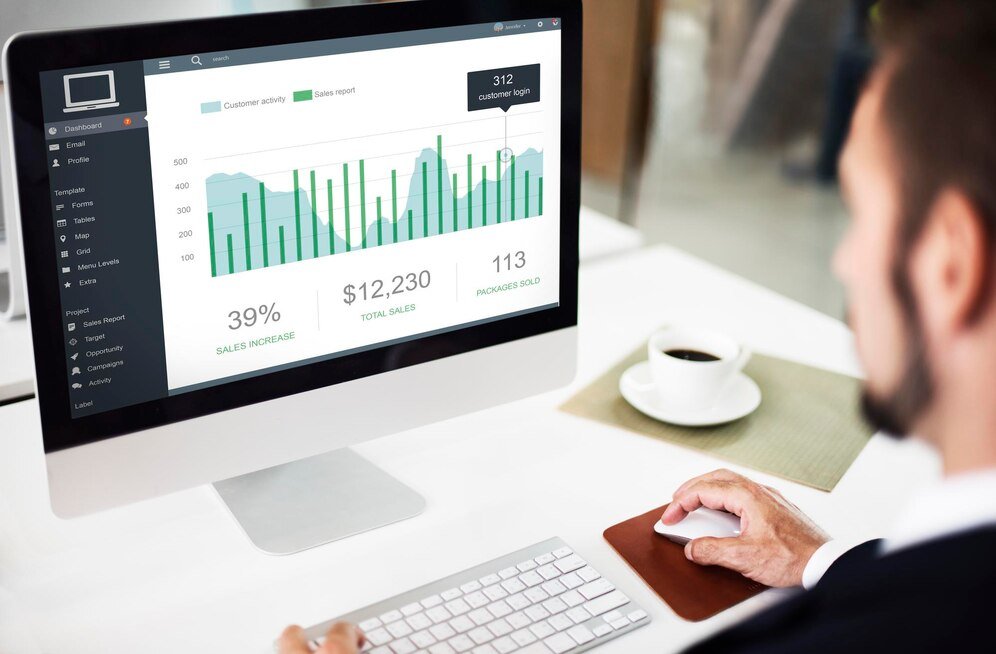Are you looking to supercharge your Amazon sales and boost your ROI? Amazon PPC (Pay-Per-Click) advertising might just be your secret weapon. In this comprehensive guide, we’ll dive into the world of Amazon PPC and uncover the strategies to optimize your conversion rate effectively.
Amazon PPC is a paid advertising model where sellers bid on keywords to display their products prominently in search results and on product pages. The conversion rate, which measures the percentage of clicks that result in a sale, is paramount in determining the success of your Amazon PPC campaigns.
In this article, we’ll explore the factors influencing Amazon PPC conversion rates, walk you through setting up your first campaign, and reveal advanced tactics to take your advertising to the next level.

Key Takeaways
- Understand the importance of conversion rates in Amazon PPC campaigns and how they impact your overall success.
- Different types of amazon ads conversion rates to track, including website conversion rate, landing page conversion rate, click-through conversion rate, email conversion rate, sales conversion rate, and social media conversion rate.
- Steps to set up your Amazon PPC account and campaign, including account creation, campaign creation, targeting, ad group structure, ad creation, and tracking conversions.
- Strategies to optimize keyword targeting, including researching and selecting keywords, utilizing match types, identifying negative keywords, and adjusting bids.
- Tips for enhancing landing pages to improve user experience, increase conversions, and drive sales.
Understanding PPC Conversion Rates
PPC conversion rate refers to the percentage of people who click on a pay-per-click (PPC) advertisement and then complete a desired action, such as making a purchase, filling out a form, or signing up for a newsletter. It is a metric used to measure the effectiveness of a PPC campaign in terms of generating conversions. A higher conversion rate indicates that a larger proportion of people who click on the ad are taking the desired action, which is typically the goal of any PPC campaign.
Different Types of Amazon Ads Conversion Rates
There are several different types of conversion rates that businesses may track depending on their specific goals and objectives. Here are some common types:

1. Website Conversion Rate
The website conversion rate measures the effectiveness of a website in converting visitors into customers or achieving other desired actions. It is calculated by dividing the number of conversions by the total number of visitors and multiplying it by 100 to get a percentage.
Recent data indicates that the average website conversion rate across various industries is around 2.35%. However, this rate can vary significantly depending on the industry.
For example:
- Financial Services: 4.0%
- Healthcare: 3.8%
- B2B Technology: 2.4%
Factors affecting conversion rates include page load time, with a 1-second delay potentially reducing conversions by 7% . Additionally, companies spend significantly more on customer acquisition than on conversion rate optimization, highlighting a potential area for improvement.
2. Landing Page Conversion Rate
Landing Page Conversion Rate is a metric that specifically focuses on the effectiveness of a landing page in converting visitors into leads or customers. A landing page is a standalone web page that is designed with a specific purpose, such as promoting a product, service, or offer, and encouraging visitors to take a desired action.
The landing page conversion rate is calculated by dividing the number of conversions (desired actions) by the total number of visitors to the landing page and multiplying it by 100 to get a percentage.
This metric is particularly important in Pay-Per-Click (PPC) campaigns, where businesses direct targeted traffic from online advertisements to a dedicated landing page. The goal of these campaigns is to maximize conversions and achieve a positive return on investment (ROI) for the advertising spend.
3. Click-through Conversion Rate
Click-through Conversion Rate is a metric that measures the effectiveness of an advertisement in driving conversions. It specifically focuses on the percentage of people who click on an advertisement and then go on to complete a desired conversion action, such as making a purchase, filling out a form, or subscribing to a newsletter.
The click-through conversion rate is calculated by dividing the number of conversions generated from ad clicks by the total number of ad clicks and multiplying it by 100 to get a percentage.
This metric is crucial in evaluating the success of online advertising campaigns, as it provides insights into how well the ads are performing in terms of driving actual conversions. It goes beyond just measuring the click-through rate (CTR), which only indicates the percentage of people who clicked on an ad out of the total number of impressions.
4. Email Conversion Rate
Email Conversion Rate is a metric that measures the effectiveness of an email marketing campaign in driving conversions. It specifically focuses on the percentage of recipients who not only open an email but also click on a link within the email and go on to complete a desired action, such as making a purchase, signing up for an event, or subscribing to a service.
The email conversion rate is calculated by dividing the number of conversions generated from email clicks by the total number of email clicks and multiplying it by 100 to get a percentage.
A high email conversion rate suggests that the email campaign is not only capturing recipients’ attention but also effectively motivating them to take the desired action. It indicates that the email’s content, design, and call-to-action are compelling and relevant to the target audience.
5. Sales Conversion Rate

Sales Conversion Rate is a key metric that measures the success of a sales process in converting leads or prospects into paying customers. It provides insights into the effectiveness of the sales team and their ability to close deals.
The sales conversion rate is calculated by dividing the number of converted leads or prospects by the total number of leads or prospects and multiplying it by 100 to get a percentage.
To improve the sales conversion rate, businesses can implement several strategies. This may involve refining lead qualification criteria to ensure that only qualified leads are pursued, providing comprehensive training and resources to the sales team to enhance their product knowledge and selling skills, improving communication and follow-up processes to stay engaged with leads throughout their buying journey, addressing customer objections and concerns effectively, offering personalized solutions or incentives to increase customer motivation to purchase, and analyzing and optimizing the sales process based on data and feedback.
6. Social Media Conversion Rate
Social Media Conversion Rate is a metric that evaluates the effectiveness of social media marketing efforts in driving user engagement and conversions. It measures the percentage of social media users who not only click on a post or ad but also complete a desired action, such as making a purchase, signing up for a newsletter, filling out a form, or downloading an app.
This metric is crucial for businesses that utilize social media platforms as part of their marketing strategy. It provides insights into how well their social media content and advertisements are resonating with their target audience and driving them to take action.
By monitoring and improving the social media conversion rate, businesses can maximize the return on investment from their social media marketing efforts. This metric helps them understand the effectiveness of their social media campaigns, identify areas for improvement, and make data-driven decisions to optimize their social media strategies and tactics
Setting Up an Amazon PPC Account and Campaign

Account Creation
Your journey into the realm of Amazon PPC commences with the creation of an Amazon Seller Central account if you haven’t already embarked on this path. This portal will serve as your headquarters for managing and optimizing your Amazon PPC campaigns.
Campaign Creation
With your Seller Central account in tow, the next pivotal step is crafting your initial Amazon PPC campaign. The decision-making process begins here, where you select your campaign type, establish a budget through amazon ppc bid calculator that aligns with your objectives, and outline your bid strategy.
Targeting
The true magic of Amazon PPC unfolds as you strategically choose your target keywords, products, and audience segments. This is the heart of your campaign, where precision targeting can significantly impact your conversion rate and ROI.
Ad Group Structure
To ensure that your ads reach the right audience with maximum relevancy, organizing your ads into ad groups is paramount. This structure allows you to manage and optimize each group independently, aligning them with distinct product categories or keyword themes.
Ad Creation
Now comes the creative part – crafting compelling ad copy and selecting the products you wish to promote. Here, your ability to convey the unique value of your products and connect with your target audience plays a pivotal role in your campaign’s success.
Tracking Conversions and Conversion Rate
To gauge the true effectiveness of your Amazon PPC campaign, tracking conversions is a non-negotiable practice. This can be achieved by seamlessly integrating the Amazon Pixel or by harnessing Amazon’s robust reporting tools. The crux of it all lies in calculating your conversion rate, a key performance indicator, by dividing the number of actual sales generated by the total number of clicks your ads have received.
As you embark on your Amazon PPC journey, it’s essential to understand that conversion rate optimization is an ongoing process. Continual refinement and adaptation based on data-driven insights will be the driving force behind your campaign’s success. With these foundational steps in place, you’re now equipped to delve deeper into the world of Amazon PPC and unlock the full potential of your e-commerce enterprise.

Optimizing Keyword Targeting
Researching and Selecting Keywords
Keyword research forms the bedrock of Amazon PPC triumph. It’s the compass that guides you toward your target audience. To excel in this critical step, leverage powerful tools such as Amazon’s in-house Keyword Planner or robust third-party solutions like Ahrefs. These tools help you identify the holy grail of keywords: those that are not only high in relevance but also brimming with traffic potential.
Match Types
Understanding the nuances of match types is akin to mastering the art of Amazon PPC. These match types determine how closely your chosen keywords align with the user’s search query, offering a spectrum of targeting options:
- Broad Match: Casting a wide net, this match type exhibits your ad for variations, synonyms, and related terms of your keywords. It’s the net that captures a diverse range of potential customers.
- Phrase Match: Here, your ad graces the search results when users enter the exact keyword phrase you’ve selected. It’s the sweet spot between precision and broad coverage.
- Exact Match: Precision at its peak. With this match type, your ad exclusively surfaces when the precise keyword is typed in by a user. It’s the bullseye approach to keyword targeting.
Negative Keywords
In the quest for efficient ad spend, negative keywords emerge as the unsung heroes of Amazon PPC. These are the search terms you choose to exclude from triggering your ads, preventing wasteful expenditure on irrelevant clicks. Monitor your campaign’s search term report vigilantly to unearth golden opportunities for new negative keywords. This constant optimization helps you fine-tune your targeting, ensuring your ads reach the most receptive audience.
Bid Adjustments
Bid adjustments are the levers at your disposal for finely tuning your campaign’s performance. They grant you the power to flexibly increase or decrease bids based on keyword performance, thereby optimizing your ad spend. When certain keywords prove their mettle by delivering high-converting traffic, allocate more of your budget to amplify their reach. Conversely, for keywords that are less fruitful, consider lowering your bids to conserve resources for more lucrative avenues.
In the intricate dance of Amazon PPC, the balance between keyword selection, match types, negative keywords, and bid adjustments is your key to success. It’s an ongoing journey of optimization, where data-driven decisions fuel your campaign’s ascent. By mastering these elements, you’ll unlock the potential for higher conversions and greater returns on your Amazon PPC investment.

Enhancing Landing Pages for Amazon Conversion Rate Optimization
Enhancing your landing pages is a critical component of Amazon ads conversion rate optimization. This process involves refining the elements that your potential customers interact with once they click on your Amazon PPC ads. By improving the user experience, clarifying product benefits, and streamlining the checkout process, you can significantly increase the likelihood of converting visits into sales.
Ensuring Relevance
To enhance the effectiveness of your landing pages, it is crucial to align them with your ads. This means that the messaging, visuals, and overall tone of your landing page should be consistent with the ad that users clicked on. By providing a seamless customer journey, you can create a sense of continuity and trust, increasing the likelihood of conversions. Ensure that the landing page delivers on the promises made in the ad and addresses the specific needs or interests of the target audience.
Clear Call-to-Action
A clear and prominent call-to-action (CTA) is essential for guiding customers towards making a purchase or taking the desired action. Use visually appealing buttons or links that stand out on the page and clearly communicate what action you want users to take. The language used in the CTA should be compelling and action-oriented, encouraging users to click and proceed with the desired action.
Key Product Details and Images
To increase conversions, it is important to provide users with easy access to key product details and high-quality images. Clearly display important information such as product features, specifications, pricing, and availability. Use descriptive and persuasive language to highlight the benefits and unique selling points of your product or service. Additionally, include visually appealing images that showcase the product from different angles or in use, helping users visualize its value. To improve your images and make them viewable by all using an image converter tool, you must convert them to the correct format.
Optimize Page Speed and Mobile Experience
Page speed and mobile experience play a significant role in user satisfaction and conversion rates. A fast-loading landing page ensures that users do not get frustrated by long loading times, reducing bounce rates and increasing engagement. Optimize images, minimize code, and leverage caching techniques to improve page speed. Additionally, ensure that your landing page is mobile-friendly and responsive across various devices. This allows users to easily navigate and interact with your page on their smartphones or tablets, leading to higher conversion rates.
Persuasive Copywriting Techniques
Employing persuasive copywriting techniques can significantly impact the emotional connection between your brand and the audience. Use compelling language that resonates with your target audience, addressing their pain points and desires. Incorporate storytelling techniques to create a narrative that engages users and builds trust. Highlight the benefits and outcomes that users can expect from taking the desired action, emphasizing how it will positively impact their lives. By leveraging persuasive copywriting techniques, you can create a sense of urgency, desire, and trust, ultimately increasing conversions on your landing pages.
Advanced Optimization Tactics
Automated Bidding Strategies
To further optimize your Amazon PPC campaigns, consider utilizing automated bidding strategies. Dynamic bidding allows you to adjust your bids based on factors such as placement, device, and audience. This strategy helps maximize your return on investment (ROI) by automatically adjusting bids to target the most valuable opportunities. Targeted bidding strategies, on the other hand, allow you to set specific bid adjustments for different targeting options, such as keywords or product categories. By leveraging automated bidding strategies, you can optimize your campaigns more efficiently and effectively.
Enhanced Brand Content Ads
Enhanced Brand Content (EBC) ads provide an opportunity to create visually appealing and informative product listings. With EBC, you can include rich multimedia elements such as images, videos, and enhanced product descriptions. This feature allows you to showcase your brand’s unique selling points and create a more engaging shopping experience for customers. By leveraging EBC ads, you can differentiate your products from competitors and increase conversions.
Video Ads
Video ads are a powerful tool for engaging shoppers and capturing their attention. By creating compelling video content, you can effectively communicate your brand’s message and showcase your products in action. Video ads allow you to tell a story, evoke emotions, and build a stronger connection with your target audience. By incorporating video ads into your Amazon PPC campaigns, you can increase brand awareness, drive traffic to your product pages, and ultimately boost conversions.
Improving Seller Ratings and Feedback
Positive reviews and a high seller rating are crucial for building trust with potential customers on Amazon. To improve your seller ratings and feedback, focus on providing excellent customer service, delivering high-quality products, and promptly addressing any customer concerns or issues. Encourage satisfied customers to leave positive reviews by sending follow-up emails or offering incentives. A strong seller rating and positive feedback can significantly impact conversions by instilling confidence in potential buyers.
Promotions and Coupons
Leveraging Amazon’s promotional tools can be an effective way to incentivize purchases and increase conversions. By offering promotions and coupons, you can provide customers with discounts or special offers, encouraging them to make a purchase. Promotions can be applied to specific products, product bundles, or even entire orders. By strategically using promotions and coupons, you can attract more customers, increase sales volume, and improve your overall conversion rates.
Retargeting in Amazon PPC
Retargeting allows you to re-engage potential customers who have previously visited your product pages but did not make a purchase. By using Amazon’s retargeting feature in your PPC campaigns, you can display targeted ads to these users as they browse other parts of the Amazon platform. This helps keep your products top of mind and encourages users to return and complete their purchase. Retargeting is a powerful tactic for increasing conversions by reaching out to users who have already shown interest in your products.
Analyzing Performance Data

Key Metrics
When analyzing the performance of your Amazon PPC campaigns, it’s important to track essential metrics. These include impressions (the number of times your ads are shown), clicks (the number of times your ads are clicked), click-through rate (CTR) (the percentage of impressions that result in clicks), conversions (the number of desired actions, such as purchases or sign-ups), and Advertising Cost of Sales (ACoS) (the ratio of ad spend to sales revenue). By monitoring these key metrics, you can gain insights into the effectiveness and profitability of your campaigns.
Calculating True Conversion Rate
To get a more accurate understanding of your campaign’s performance, it’s important to consider the full customer journey. This includes not only the initial conversion but also repeat purchases. By calculating your true conversion rate, which takes into account both initial and repeat purchases, you can better assess the long-term success and profitability of your campaigns. This metric provides a more comprehensive view of customer behavior and allows you to make more informed decisions about your advertising strategies.
Metrics by Match Type, Keyword, Placement
Segmenting your performance data by match type, keyword, and placement can provide valuable insights into specific areas for improvement. By analyzing metrics such as impressions, clicks, CTR, conversions, and ACoS at a granular level, you can identify which match types (broad, phrase, exact) or keywords are performing well and which ones may need optimization. Additionally, analyzing performance by placement (such as top of search or product detail pages) can help you understand where your ads are most effective and where adjustments may be needed.
Identifying Low-Performing Elements
Analyzing performance data allows you to identify keywords or ads with low conversion rates. By pinpointing these underperforming elements, you can take corrective actions to improve their effectiveness. This may involve refining keyword targeting, optimizing ad copy or creative, or adjusting bids. By continuously monitoring and optimizing low-performing elements, you can maximize the ROI of your Amazon PPC campaigns and drive better results.
Monitoring Changes Over Time
The Amazon marketplace is dynamic, with changes in competition, customer behavior, and market trends. It’s crucial to regularly assess your campaign performance and adapt to these changes. By monitoring performance data over time, you can identify trends, spot opportunities, and make data-driven decisions. Regularly reviewing and adjusting your campaigns based on performance data ensures that you stay competitive and optimize your advertising efforts for maximum results.
Conclusion
In the world of Amazon PPC, the key to success lies in mastering the art of Amazon conversion rate optimization. We’ve covered everything from setting up your first campaign to advanced tactics for dominating the marketplace.
Remember, this is an ongoing journey. Consistently refine your campaigns, analyze performance data, and adapt to the ever-changing Amazon ecosystem. By doing so, you’ll not only increase your conversion rates but also maximize your return on investment.
Amazon PPC is a powerful tool in your e-commerce arsenal, and with the right strategies in place, you can take your sales to new heights. FosterFBA is here to help you profitably scale your business. We will help you optimize your campaigns, increase sales, and maximize your ROI. So, go ahead, dive in, and start optimizing your way to Amazon PPC success with FosterFBA today!
Let me know if you have any questions about your Ads Strategy. Happy to do a free audit & strategy session of your entire Ad strategy.
Cheers,

Vijay Jacob
Founder, FosterFBA
Helping 7-8 Figure Amazon Sellers grow profitably with their Amazon Advertising
P.S: If you are making over $10K/month and want to take your PPC sales to the next level. We’re offering “done-for-you” Amazon PPC management & consulting services that does just that. You can schedule a free strategy session and audit of your ads to see if we’re a good fit:
FAQs
How do you calculate the conversion rate for Amazon PPC?
To calculate the conversion rate, take total conversions and divide by total clicks. Multiply the result by 100 to get a percentage.
What is a good PPC conversion rate on Amazon?
A good PPC conversion rate on Amazon can vary depending on the product category and competition. However, a generally accepted benchmark for a good Amazon PPC conversion rate is between 10-15%. Here are some considerations:
- Above Average: A conversion rate above 15% is considered excellent.
- Industry Standard: A conversion rate between 10-15% is generally considered good.
- Improvement Needed: A conversion rate below 10% might indicate the need for optimization of your ad campaigns, product listings, or keywords.
Remember, your specific goals and industry standards should guide your assessment of what constitutes a good conversion rate for your campaigns.
How can I increase my Amazon PPC conversion rate?
Ways to increase Amazon’s PPC conversion rate include optimizing ad copy and landing pages, improving keyword and negative keyword targeting, enhancing account quality scores, and analyzing performance data to refine targeting.
What happens when Amazon PPC ads don’t convert?
If Amazon PPC ads are not converting, the first step is to analyze performance data to identify issues. Refine targeting, improve Quality Score, iterate on creative, and optimize landing pages to improve conversion rate.
Why is my Amazon PPC conversion rate so low?
Low Amazon PPC conversion rate can be caused by poor ad relevance, keywords that attract the wrong audience, landing pages that don’t convince visitors to convert, or bids that are too high and generate untargeted traffic.
What is a good Cost Per Click for Amazon PPC?
A good Cost Per Click for Amazon PPC varies significantly by product, competition and seasonality. As a general rule, aim for CPC less than your margin to maintain profitability. Monitor ACoS closely.
How to increase Conversion Rate Amazon?
To increase your conversion rate on Amazon, focus on optimizing product listings with high-quality images, keyword-rich titles, and detailed descriptions that highlight product benefits. Incorporate relevant keywords naturally throughout the listing. Utilize Amazon’s advertising tools like Sponsored Products and A/B testing to enhance visibility and effectiveness.
Encouraging positive reviews, actively managing the Q&A section, and leveraging Amazon’s Brand Registry can build customer trust. Competitive pricing strategies, including dynamic pricing and promotions, can attract more buyers. Additionally, ensure your products are always in stock and consider using Fulfillment by Amazon (FBA) for faster shipping and Prime eligibility, which can significantly boost conversion rates by improving the overall shopping experience.

